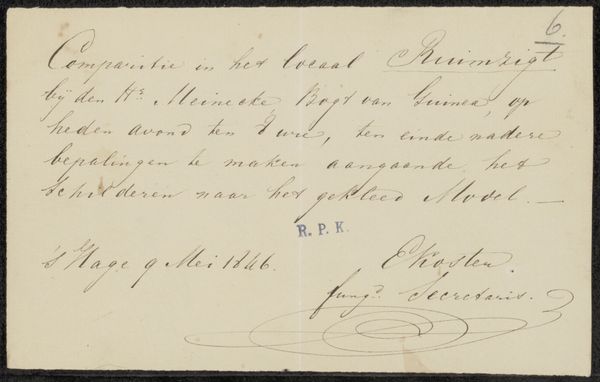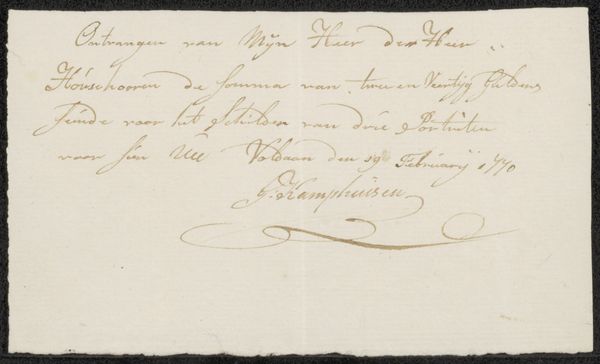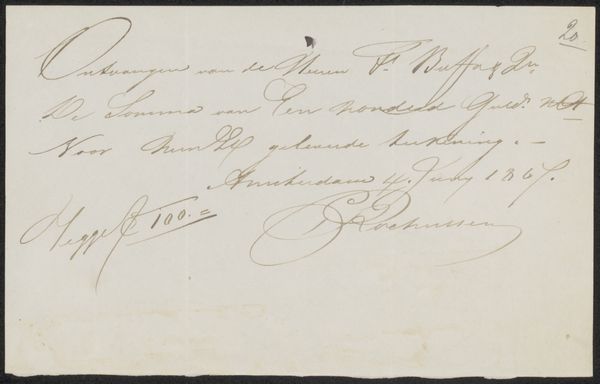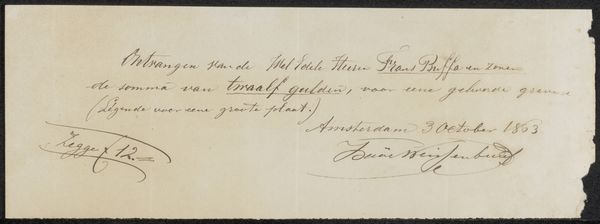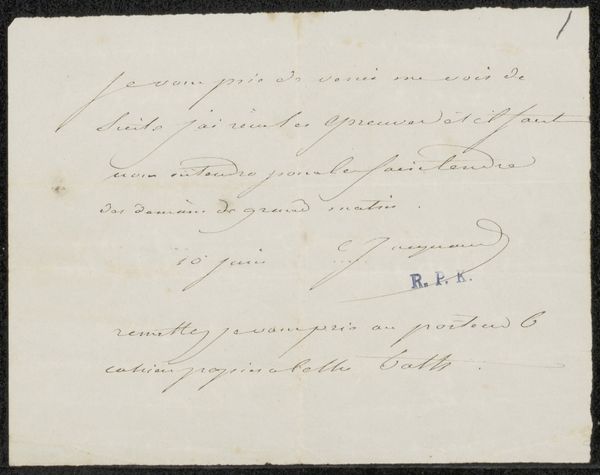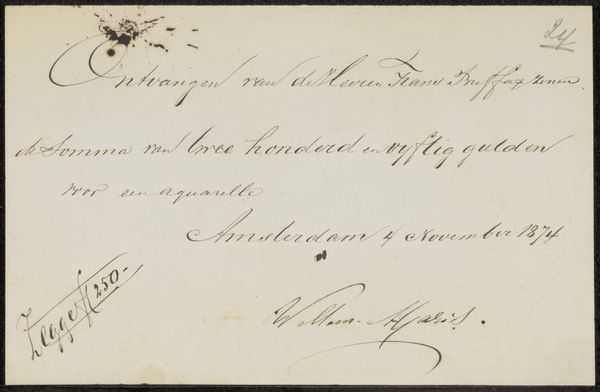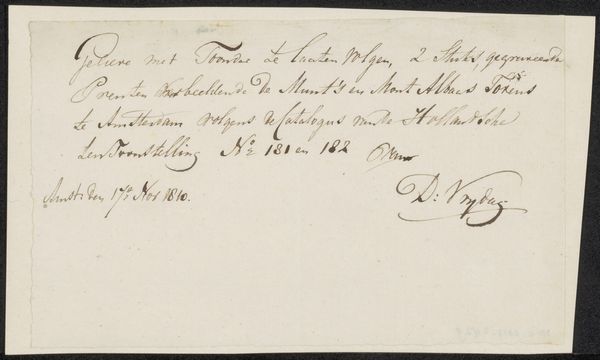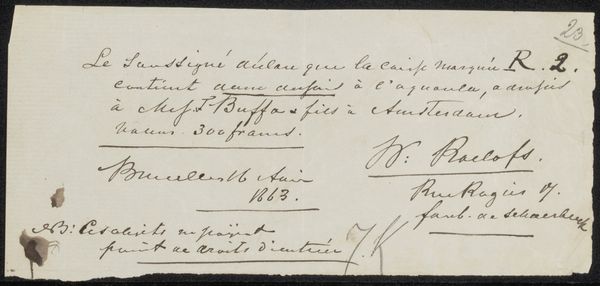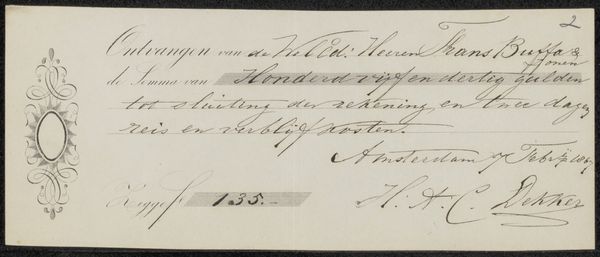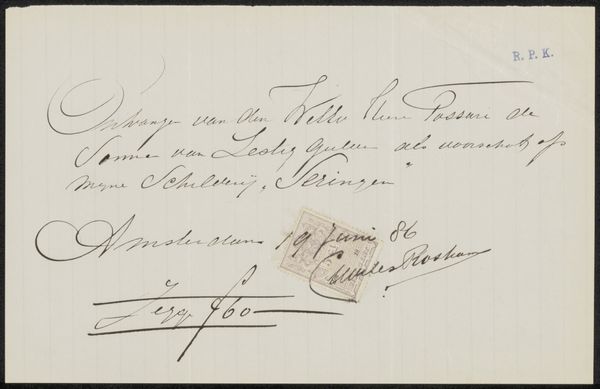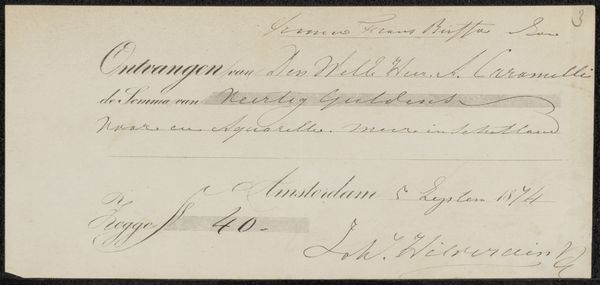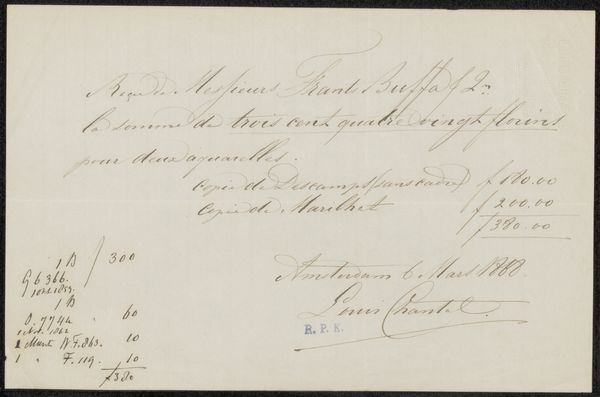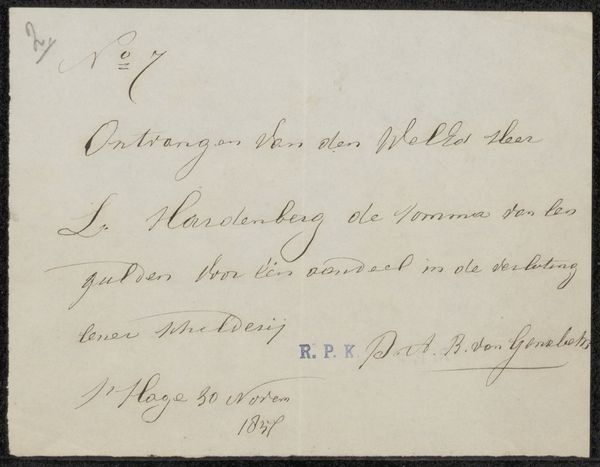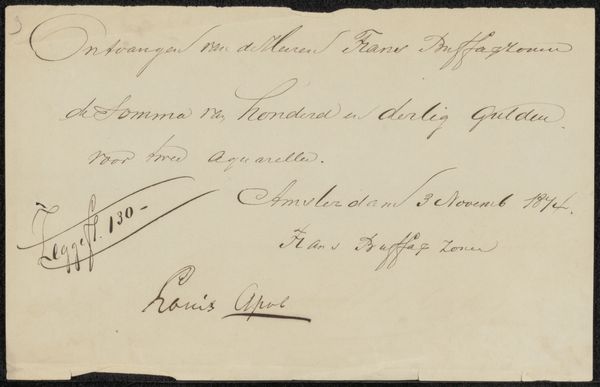
drawing, paper, ink
#
drawing
#
paper
#
ink
#
calligraphy
Copyright: Rijks Museum: Open Domain
Curator: Here we have a receipt, titled "Kwitantie voor Gerke Henkes," likely dating from 1874 to 1875, housed here at the Rijksmuseum. It’s a simple piece – ink on paper. Editor: It's a ghostly whisper from the past! All those swirling penmanship, frozen in time. What sort of soul leaves behind such a delicate record of transactions? Curator: Precisely. Frans Buffa en Zonen, the name prominently displayed, was a well-known art dealership. This receipt documents payment to Gerke Henkes for 125 guilders, for what's written as, and I love this, “services rendered among friends”. Editor: Ah, the language of commerce masquerading as kinship. I wonder about the nature of these "services." The ink seems quite ordinary, I wonder about paper quality, its watermarks? The receipt format looks like the early rise of mass printed forms. I see labour and transactions encoded in this fragile document. Curator: I like that perspective. What’s particularly charming is the "Oude Vrienden" inscription, almost like a wink in the bureaucratic process. Do you find the script itself captivating? It has real rhythm. Editor: Totally, you get lost in it like gazing at constellations. The price scribbled at the corner gives the human scale a concrete texture – who wrote this? Was it quickly handed back in between bigger dealings and conversations? The paper already yellows a bit to expose process of its production as much of the artist's expression, don't you think? Curator: Absolutely. The quickness of the ink contrasting the fading, but durable, materiality of the paper gives it almost ghostly texture that the work exudes, and what do you make of the layout – the handwritten parts interspersed with the pre-printed sections. Editor: To me that says that these sorts of paperwork helped shape relationships that are part contractual, part performative. And perhaps a tiny window into how social connections helped shape commercial dealings. And what a gorgeous object created because somebody exchanged it to get paid, something very practical in its intent... Curator: You are right. Ultimately, it’s just that little story of payment received amongst "friends"… with labor attached at every aspect of this receipt. Editor: And also, like, maybe a little bit of poetry.
Comments
No comments
Be the first to comment and join the conversation on the ultimate creative platform.
